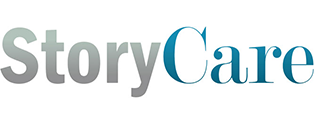Contributed by Richard Stone
From one perspective, a hospital can be viewed as a beehive of intersecting and shared stories. First, a patient arrives at the front door with a history, both personal and health wise, and the trajectory of their personal narrative can be fundamentally altered by the outcome of what occurs during their health crisis. It can be just a blip on the calendar: an interesting tale to be told about getting stitches for a cut or a false alert about chest pains. And the individual picks up where they left off, now with an entertaining story to be told at a dinner party.
Or, the health event can be so serious that it irrevocably alters the path of their lives. A good friend of mine who is a triathlete collapsed one evening two years ago with a hemorrhagic stroke. He barely survived and for the next two years took on his rehabilitation as though he was training for the race of his life, and clawed his way back to nearly 100% of where he was before the stroke. He was desperately attempting to reconstruct the narrative that he dearly associated with his identity—an athlete, a gifted corporate trainer, and a person who was witty and filled with nuance. He was back to jogging, swimming, lifting weights, and other than nearly imperceptible remnants of aphasia, he had returned to the classroom and was warmly received by professionals and admired for his courage. Then, the night before he was to deliver his first solo training since the stroke to the leaders of a major company, he was stricken with a second stroke. The story of how he returns from this new challenge is still to be written, but I can say that this mountain seems even more daunting to him than the first. Knowing his gritty personality, I suspect he will fight his way back.
These personal narratives that patients bring with them are like fragile glass vessels. While healthcare professionals dwell on the clinical narrative, this more important narrative is continuously developing whether they recognize it or not. Those nurses and doctors and housekeepers and techs who understand and appreciate the importance of the patient’s story are equipped to provide a level of healing that transcends all of their clinical expertise, and all that they do for a patient physically. For patient narratives that are shattered as in the case of my dear friend, they can also plant the seeds for reconstruction, or they can sow doubt and cement a narrative that is filled with despair and hopelessness.
A few days after my friend’s first stroke, his neurologist stepped out of the room after an examination and asked his wife what her plans were for him. She asked what he meant. He clarified—what nursing home are you going to place him in? This thought was not part of her narrative—she was planning on him recovering fully and becoming vibrant again. He attempted to dissuade her from this vision. Thank goodness she didn’t allow his story to usurp theirs.
What stories are we telling patients about their current circumstances, and what kind of vision are we painting with our words about their future story? While none of us wants to proffer false hope, we must be on guard that we are not unwittingly creating self-fulfilling prophesies of despair and demise as well.
